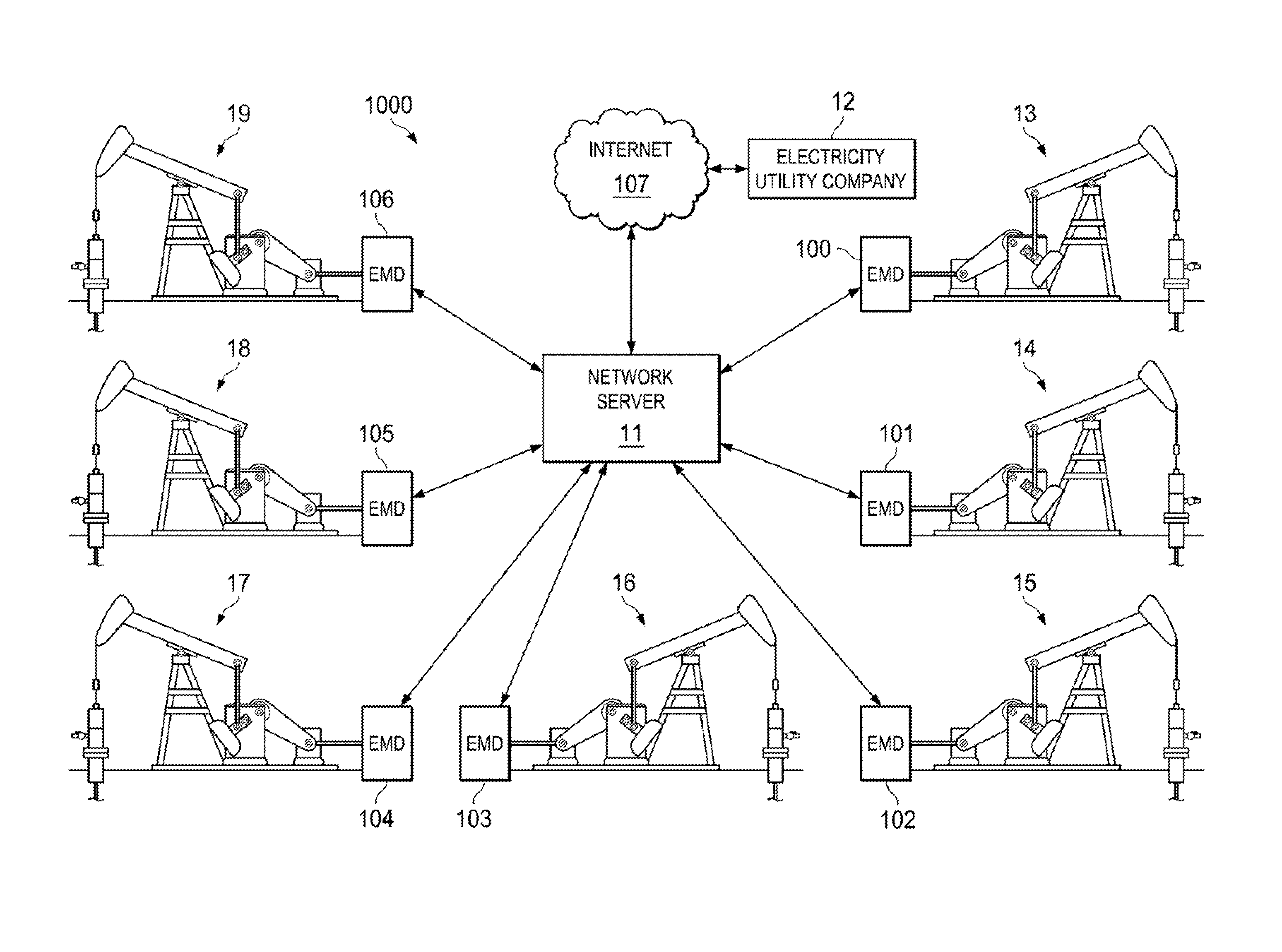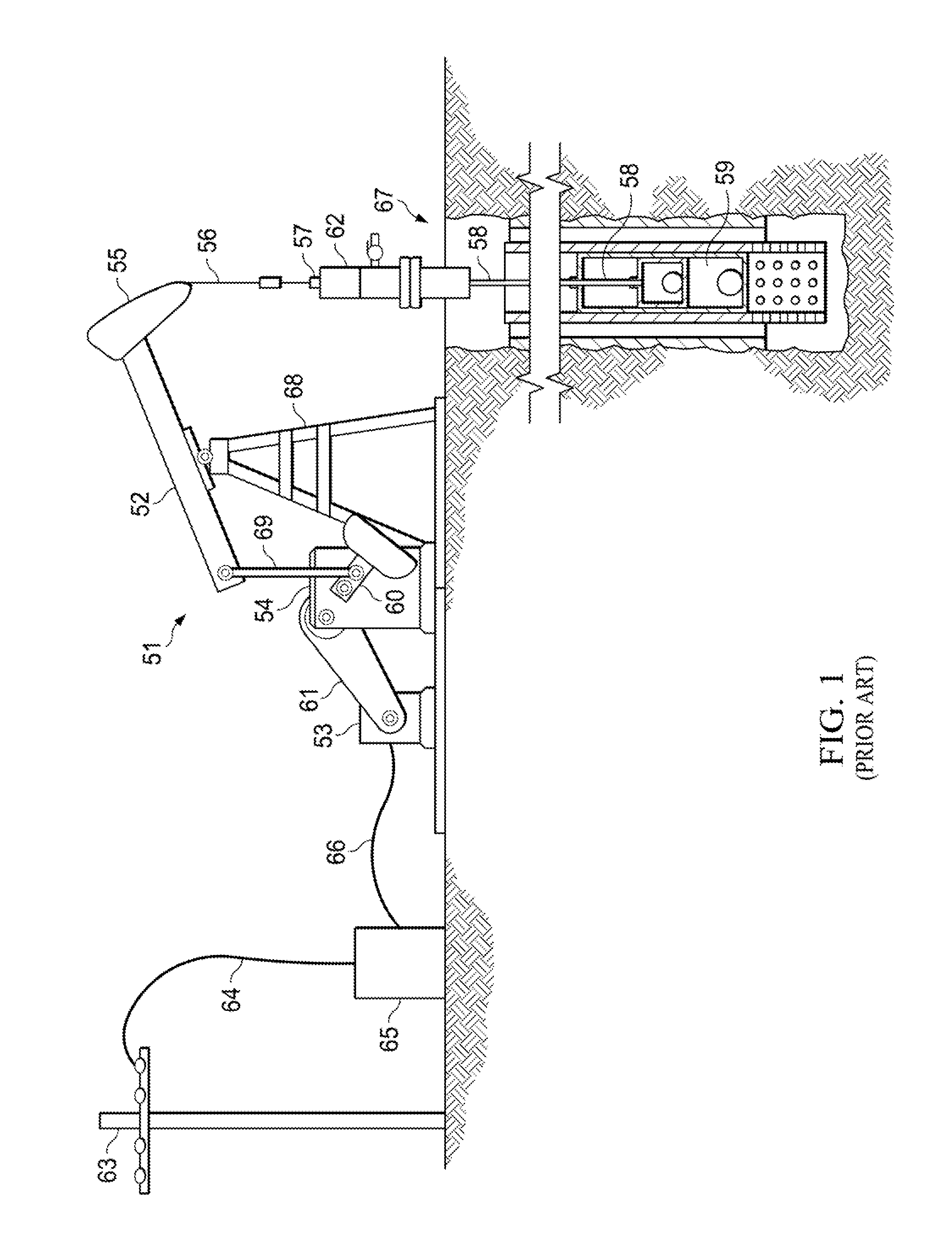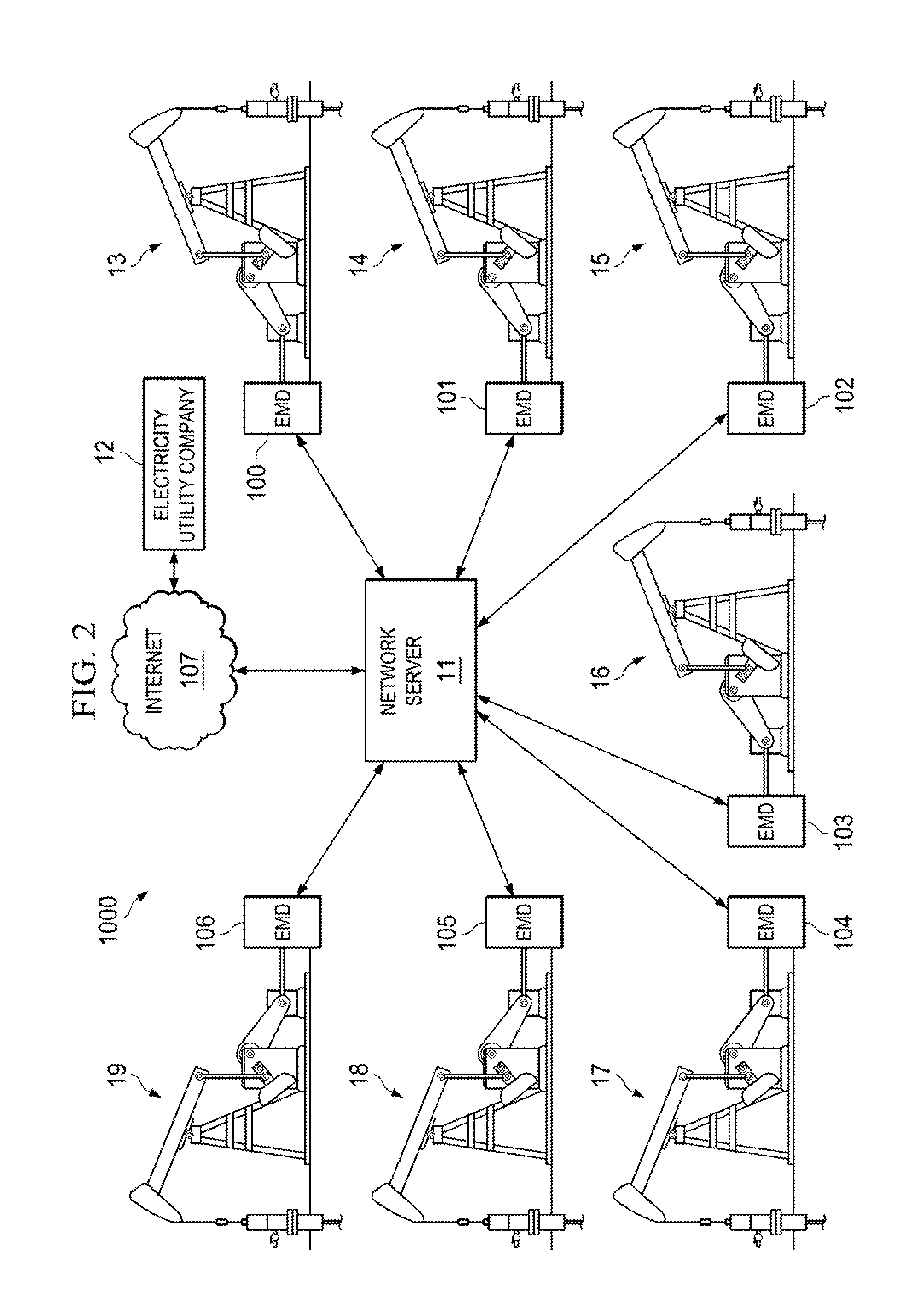System, method and apparatus for computing, monitoring, measuring, optimizing and allocating power and energy for a rod pumping system
a technology of power and energy allocation and system, applied in the field of control of rod pumping systems, can solve the problems of inductive loads such as transformers and motors, and consuming both real power and reactive power, and the ideal operation of motor b>53/b> is usually never achieved
- Summary
- Abstract
- Description
- Claims
- Application Information
AI Technical Summary
Benefits of technology
Problems solved by technology
Method used
Image
Examples
example 1
[0120]The following is an example of motor control process 700. In this example, the motor is rotating with the voltage supply to the motor applied at an RPM less than a synchronous speed of 1,200 RPM. A determination must be made whether or not the motor will be running faster than the synchronous speed at the next detected revolution before the next detected revolution occurs.
[0121]Let the time increments, in seconds, and corresponding RPMs be defined by:[0122]x0=0, x1=0.050675, x2=0.101181, and x3=0.151432, y1=1184, y2=1188, and y3=1194.
[0123]Thus,
P(x)=1182.03+18.612x+398.982x2,[26]Px=18.612+797.965x,and[27]2Px2=797.965.[28]
[0124]Therefore, at x3:
Pxx3>0and2Px2x3>0.[29]
[0125]Since
y3=1194and2Px2x3>0,usePxx3
to determine what the motor RPM will be when the motor completes its next revolution. Thus,
(x-x3)2Pxx3+(x-x3)P(x3)-60=0[30]
is solved to obtain
{tilde over (x)}=0.201392.
[0126]This implies that Δ{tilde over (x)}=0.04996. Therefore, the predicted RPM is {tilde over (y)}=1200.97. Sin...
example 2
[0143]As an example of data acquisition process 1001 of FIGS. 10A and 10B, well A, well B, and well C are connected to a single electricity meter that measures the energy consumed for wells A, B, and C. For a period of time, the electricity meter reading is determined to be 14379.52 kWh in step 1003. In step 1006, the amount of energy consumed for per well is measured: 5000 kWh for well A, 6400 kWh for well B, and 4200 kWh for well C. In step 1007, the amount of energy generated per well is measured: 1200 kWh for well A, 200 kWh for well B, and 200 kWh for well C. In step 1009, the total amount of energy consumed of 15600 kWh for wells A, B, and C is calculated. In step 1010, the total amount of energy generated of 1600 kWh for wells A, B, and C is calculated. In step 1011, the net energy for each of the set of wells is calculated: 3800 kWh for well A, 6200 kWh for well B, and 4000 kWh for well C. In step 1012, the total net energy across the set of wells is calculated as 14000 kWh....
example 3
[0144]In another useful example, the report generated in step 1016 and shown in Table 1 can be used to negotiate a lower electricity bill. Typically, electricity utility companies set electricity price rates throughout a day by a statistical demand curve with higher demand in the middle of the day and lower demand at night. Thus, the statistical curve results in higher electricity rates in the middle of the day and lower electricity rates at night. A customer of an electricity utility company operating a set of wells can use the data from the report in Table 1 to show the electricity utility company that the demand of the set of wells does not follow the statistical demand curve and can negotiate a lower price resulting in a lower electricity bill and thereby a savings in operating costs to the customer.
[0145]Referring to FIG. 11A, alert generation process 1100 is described. Energy monitoring device 100 constantly measures data in step 1101. For example, the measurements include, bu...
PUM
 Login to View More
Login to View More Abstract
Description
Claims
Application Information
 Login to View More
Login to View More - R&D
- Intellectual Property
- Life Sciences
- Materials
- Tech Scout
- Unparalleled Data Quality
- Higher Quality Content
- 60% Fewer Hallucinations
Browse by: Latest US Patents, China's latest patents, Technical Efficacy Thesaurus, Application Domain, Technology Topic, Popular Technical Reports.
© 2025 PatSnap. All rights reserved.Legal|Privacy policy|Modern Slavery Act Transparency Statement|Sitemap|About US| Contact US: help@patsnap.com



